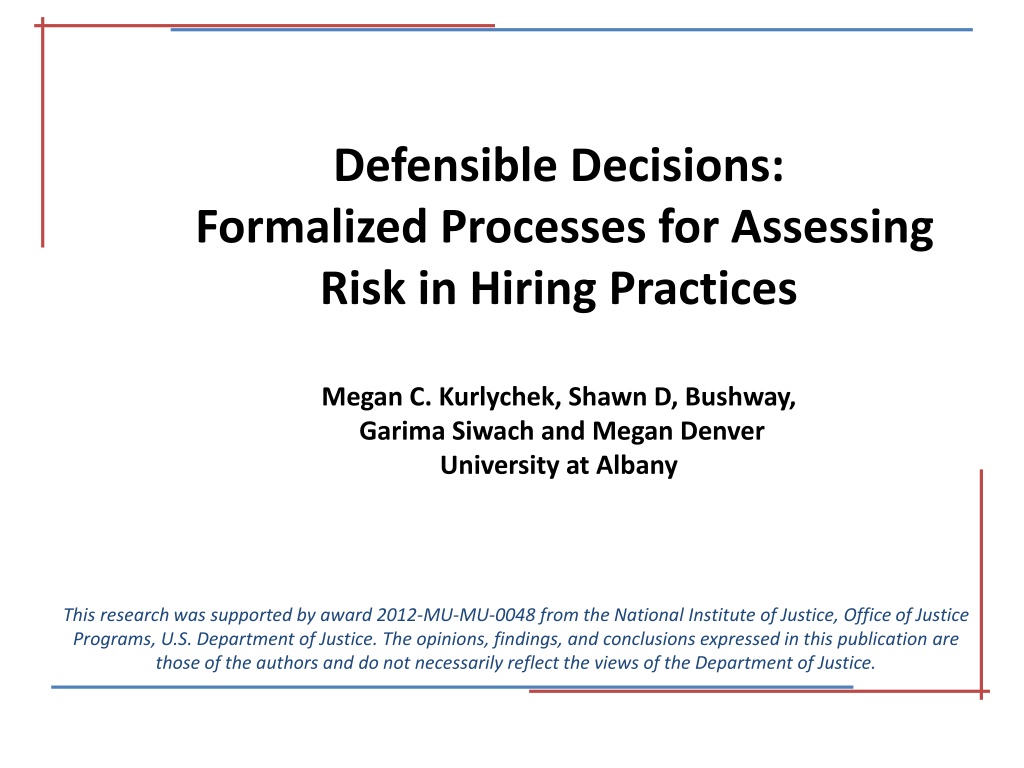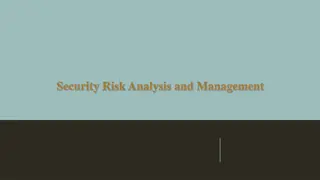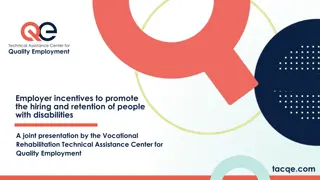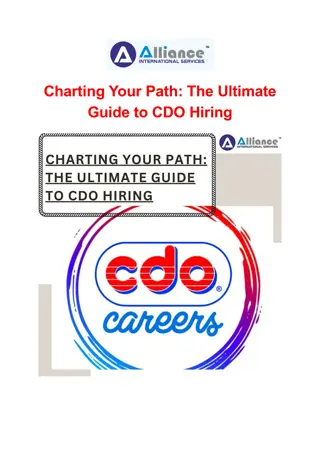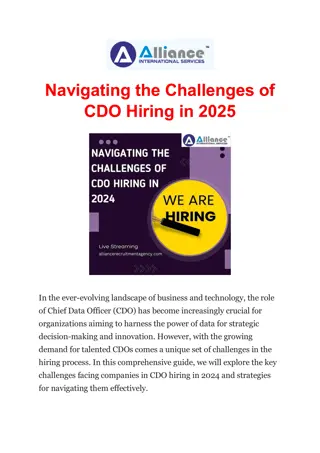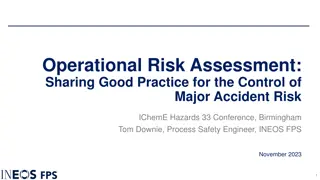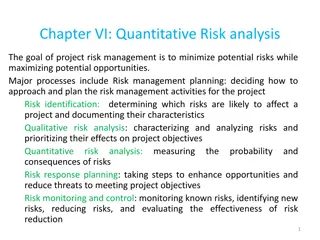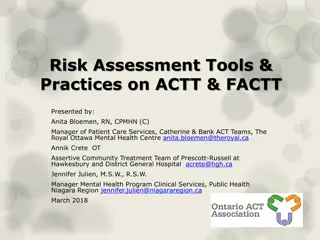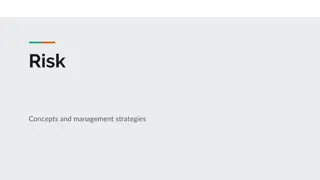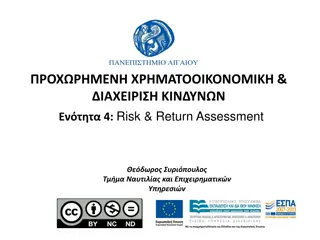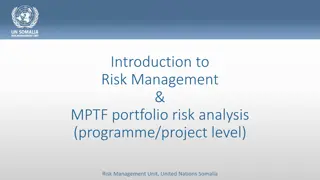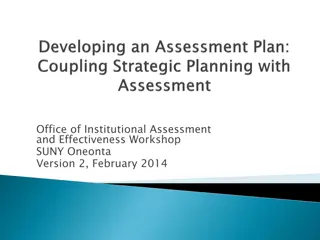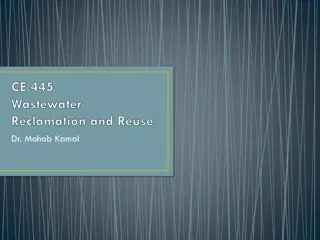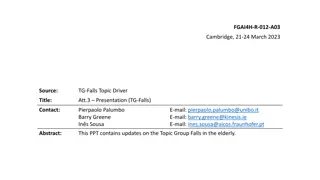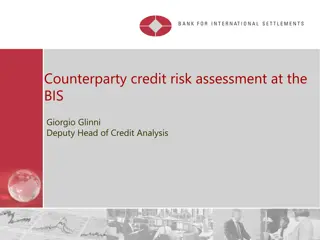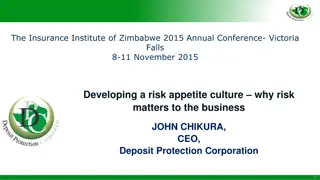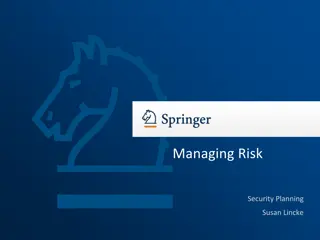Risk Assessment in Hiring Practices
This research delves into formalized processes for assessing risks in hiring practices and challenges the notion that time is the sole factor in determining safety in hiring. It explores legal considerations, such as EEOC guidelines, and suggests additional factors to consider when assessing risks, including the number, type, and severity of offenses, relevance to job duties, and evidence of rehabilitation. The project aims to evaluate current hiring practices for their effectiveness in allowing the hiring of suitable candidates and making a meaningful impact on those hired, within the framework of legal mandates and regulations.
Download Presentation

Please find below an Image/Link to download the presentation.
The content on the website is provided AS IS for your information and personal use only. It may not be sold, licensed, or shared on other websites without obtaining consent from the author.If you encounter any issues during the download, it is possible that the publisher has removed the file from their server.
You are allowed to download the files provided on this website for personal or commercial use, subject to the condition that they are used lawfully. All files are the property of their respective owners.
The content on the website is provided AS IS for your information and personal use only. It may not be sold, licensed, or shared on other websites without obtaining consent from the author.
E N D
Presentation Transcript
Defensible Decisions: Formalized Processes for Assessing Risk in Hiring Practices Megan C. Kurlychek, Shawn D, Bushway, Garima Siwach and Megan Denver University at Albany This research was supported by award 2012-MU-MU-0048 from the National Institute of Justice, Office of Justice Programs, U.S. Department of Justice. The opinions, findings, and conclusions expressed in this publication are those of the authors and do not necessarily reflect the views of the Department of Justice.
Original Question: When is it safe to hire?
Problem? Suggests TIME only relevant factor regardless of nature of criminal career so all we can do is WAIT
Legal Context EEOC Guidelines require other factors such as relevance of offense to job duties in an individualized assessment of the individual Thus, a policy to NOT hire anyone with a record until 7 or 10 years after event may not meet legal requirements
What else might help assess risk? Number of offenses Type of offenses Severity of offenses Duties of job at hand and relevance of offenses Evidence of Rehabilitation
Our Current Project To examine how employers assess risk. To set this in the context of legal mandates and regulations. To determine if the current practice: 1. Allows for the hire of reasonable individuals 2. Makes a meaningful difference for those hired
Our Partners A special thank you to these agencies! NYS Dept. of Health Clearance decision and employment dates NYS Dept. of Criminal Justice Services Full criminal history prior to decision; 3 years post FBI records NYS Dept. of Labor UI employment data for 6 years (3 pre; 3 post)
New York: Legal Context New York Law prohibits blanket bans Article 23 of the Corrections Law: Time since last offense Relation of offense to job duties Age at offense Severity of Offense (ADQ) Evidence of Rehabilitation
Context of Our Study New York State Department of Health Non-licensed direct access care workers in NY Home health care, nursing homes, long-term care CHRCLU reviews up to 140,000 provisionally hired individuals a year about 4-5% have a record Use official records state and national Have defined automatic hire and automatic denial criteria Discretionary pool reviewed by attorney
Sample Descriptives Employees Age range 16-92 Median age 37 % Black 42% % White 49% % Men 15% Facilities Nursing homes 34% LHCSA facilities 65% Facilities in NYC 56%
The DOH Process The person is fingerprinted and DOH s CHRC division reviews the case The person receives a pending or final decision letter Person applies and is provisionally hired
DOH processes 91% No Conviction 3% Hired Non-Denial A or B 1% Open, not held in abeyance
DOH processes 1% Open, held in abeyance Terminated 4% Final Non-Denial B : Hired Pending Final Denial A or B: Terminated
Impact of Clearance: Does is Matter for Employee? Our Approach: DiD models EXAMPLE Outcome Difference pre-clearance Difference post-clearance -12 -10 -8 -6 -4 -2 0 2 4 6 8 10 12 Quarter Not cleared Cleared
Any Employment: three years from decision
Health Care Employment: three years from decision
Income: Conditional on Being Hired
Implications Rules for considering type of offense and its relation to job can be applied consistently Such rules DO allow for the hire of a significant portion of individuals with criminal records The ability to gain employment makes a significant difference in employment and earnings outcomes for this population
Directions 1. Benchmark acceptable levels of risk 2. Closer examination of 10-year rule 3. Help DOH determine if there are better criteria to use in discretionary pool to reduce false positives and false negatives
